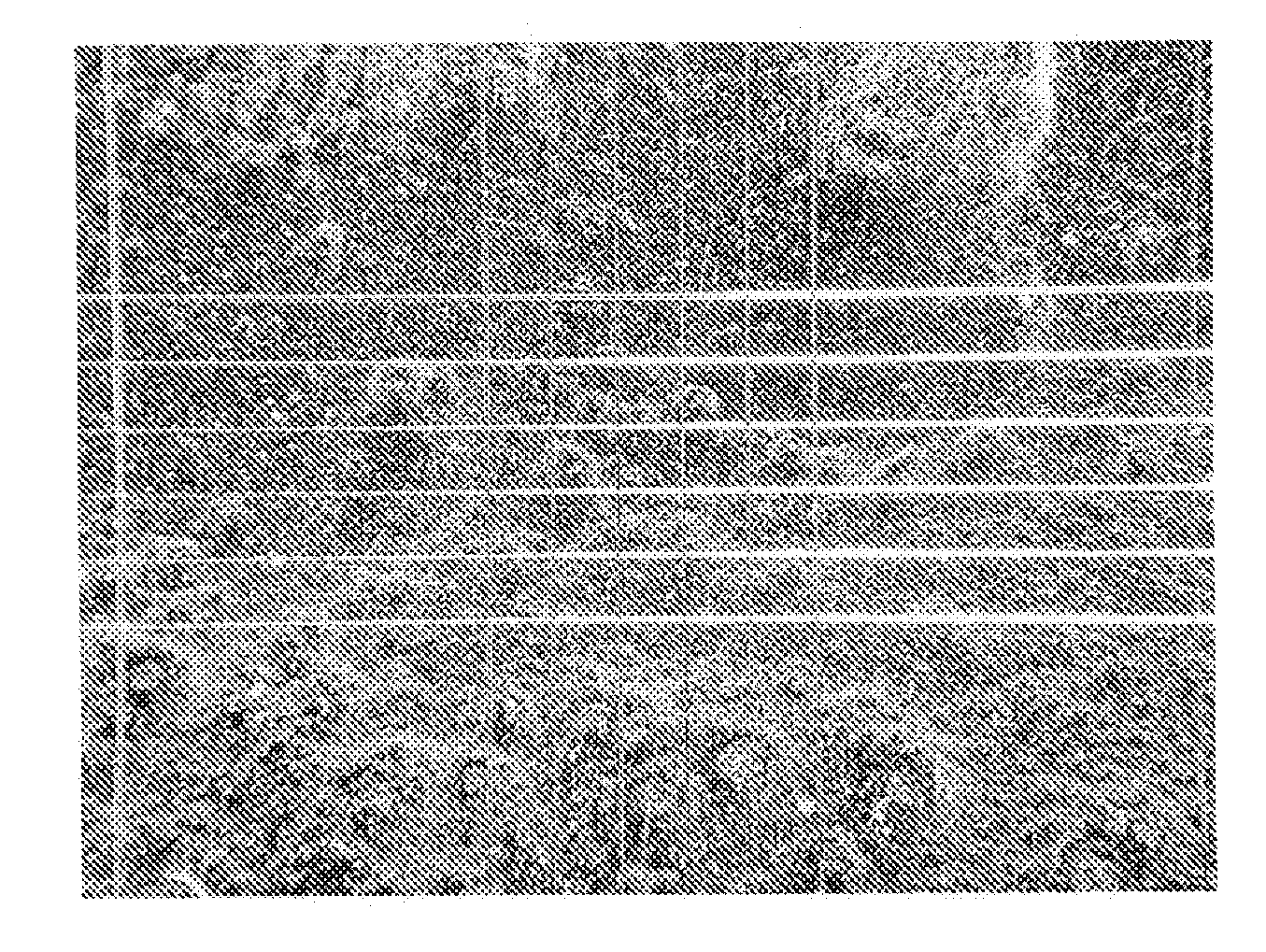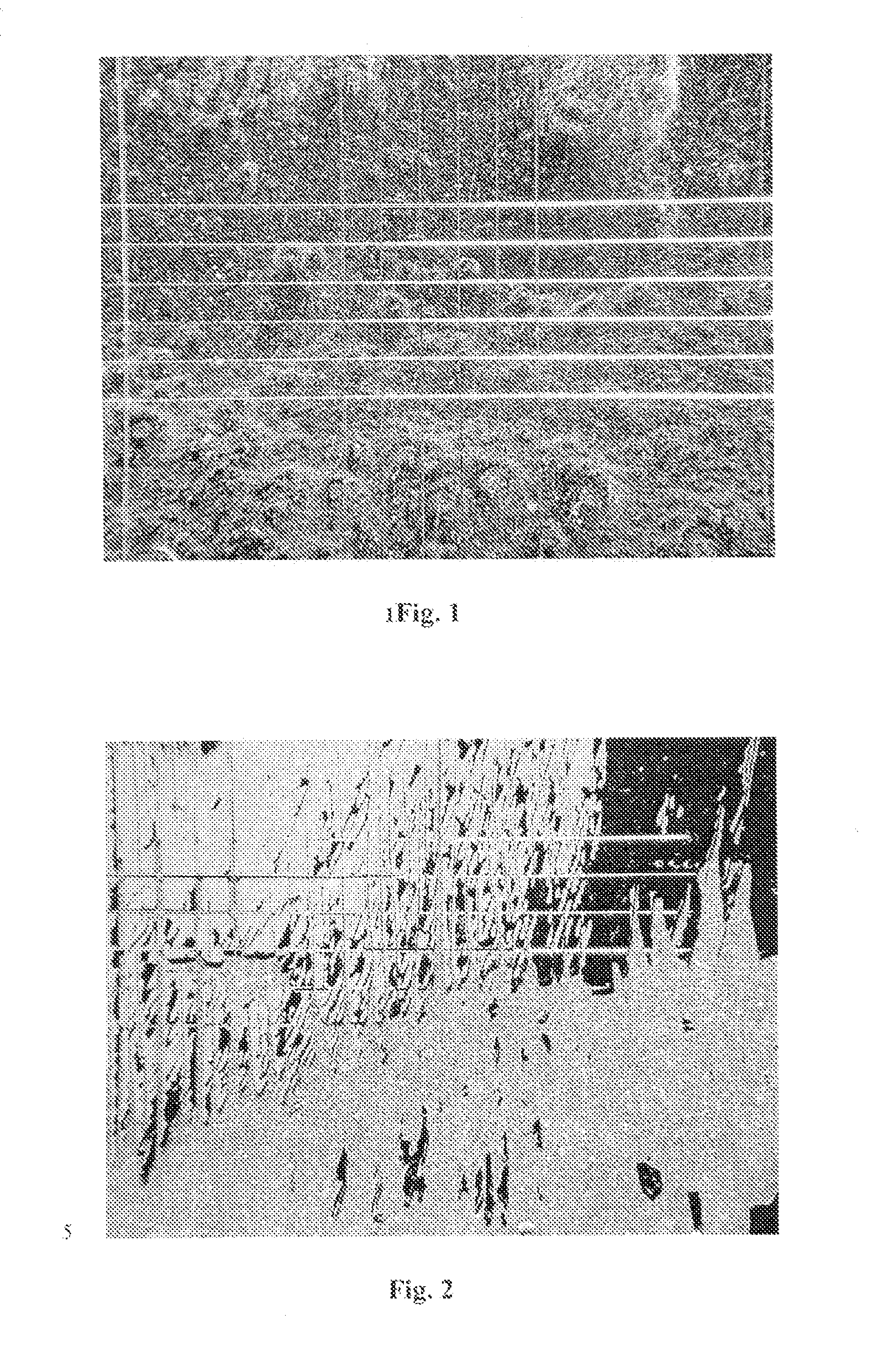Silver-containing aqueous formulation and its use to produce electrically conductive or reflective coatings
a technology of aqueous formulation and silver-containing aqueous formulation, which is applied in the direction of liquid/solution decomposition chemical coating, conductor, instruments, etc., can solve the problem of high cost of silver raw material, and achieve the effect of simple and cost-effective manner
- Summary
- Abstract
- Description
- Claims
- Application Information
AI Technical Summary
Benefits of technology
Problems solved by technology
Method used
Image
Examples
example 1
[0053]Preparation of Silver Particles with Purification by Centrifuging
[0054]A mixture of a 0.054 molar caustic soda solution and the dispersant Disperbyk 190 (manufacturer: BYK Chemie) (1 μl) in a volume ratio of 1:1 was added to a 0.054 molar silver nitrate solution and stirred for 10 minutes. A brown Ag2O nanosol was produced. An aqueous 4.6 molar formaldehyde solution was added to this reaction mixture while stirring, so that the molar ratio of Ag* to reducing agent was 1:10. This mixture was heated to 60° C., kept at this temperature for 30 minutes and then cooled. The particles were purified by centrifuging (60 min at 30000 rpm) and redispersed in fully deionised water by applying ultrasound energy (1 min). This process was repeated twice. A colloidal-stable sol with a solids content of 5 wt. % (silver particles and dispersant) was obtained in this way. The yield was just under 100%. The silver dispersion contained 3 wt. % of Disperbyk 190, with respect to silver content, acco...
example 2
[0055]Preparation of Silver Particles with Purification by Membrane Filtration
[0056]A mixture of a 0.054 molar caustic soda solution and the dispersant Disperbyk 190 (manufacturer: BYK Chemie) (1 g / l) in a volume ratio of 1:1 was added to a 0.054 molar silver nitrate solution and stirred for 10 minutes. An aqueous 4.6 molar formaldehyde solution was added to this reaction mixture while stirring, so that the molar ratio of Ag to reducing agent was 1:10. This mixture was heated to 60° C., kept at this temperature for 30 minutes and then cooled. In a first step the particles were separated from the unreacted feedstocks by diafiltration and then the sol was concentrated, a 30000 Dalton membrane being used for this purpose. A colloidal-stable stable sol with a solids content of 10 wt. % (silver particles and dispersant) was obtained. The proportion of Disperbyk 190 was 6 wt. %, with respect to the silver content, according to elemental analysis after membrane filtration. An investigation...
example 3
[0057]Formulation of a Silver Ink
[0058]1 ml of a mixture of 99 parts by wt. of water, 1 part by wt. of dioxalan, 0.03 part by wt. of PVP K15 and 0.17 part by wt. of Disperbyk 190 was added to 1 ml of an 8 wt. % silver sol from Example 2 and thoroughly stirred in. One drop of this mixture was placed on PC and sintered for 1 h at 140° C. The relative electrical resistance of the drop was 0.1 ohm.
PUM
| Property | Measurement | Unit |
|---|---|---|
| Temperature | aaaaa | aaaaa |
| Fraction | aaaaa | aaaaa |
| Fraction | aaaaa | aaaaa |
Abstract
Description
Claims
Application Information
 Login to View More
Login to View More - R&D
- Intellectual Property
- Life Sciences
- Materials
- Tech Scout
- Unparalleled Data Quality
- Higher Quality Content
- 60% Fewer Hallucinations
Browse by: Latest US Patents, China's latest patents, Technical Efficacy Thesaurus, Application Domain, Technology Topic, Popular Technical Reports.
© 2025 PatSnap. All rights reserved.Legal|Privacy policy|Modern Slavery Act Transparency Statement|Sitemap|About US| Contact US: help@patsnap.com


